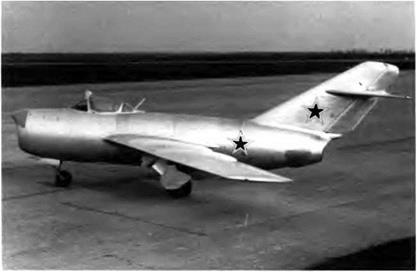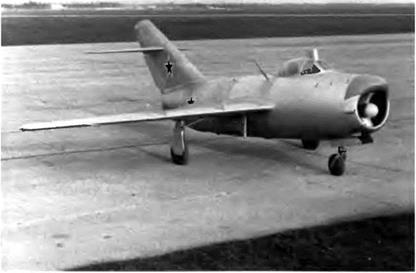MiG 15 bis / SDK-5/SDK 5s/SDK7
In order to train its fighter pilots for combat, the PVO needed a large number of aircraft with the same performance characteristics as combat aircraft—especially speed. Towed windsocks or plywood gliders were no longer sufficient for target practice. Customized mobile targets were needed, targets capable of maneuvering or changing their speed, heading, and altitude. Then it occurred to someone that MiG-15 bis’s

|
|
|
that had outlasted their prescribed operational life span could be used to meet that need. Their ejection seats were replaced by remote control equipment so that they could be flown either from the ground or from another aircraft. This is how the SDK-5 was bom.
In 1955 the MiG ОКБ used MiG-15 and MiG-15 bis airframes to test the unmanned SDK-5s and SDK-7, which were in essence remotely controlled bombs that could be used against ground targets.












